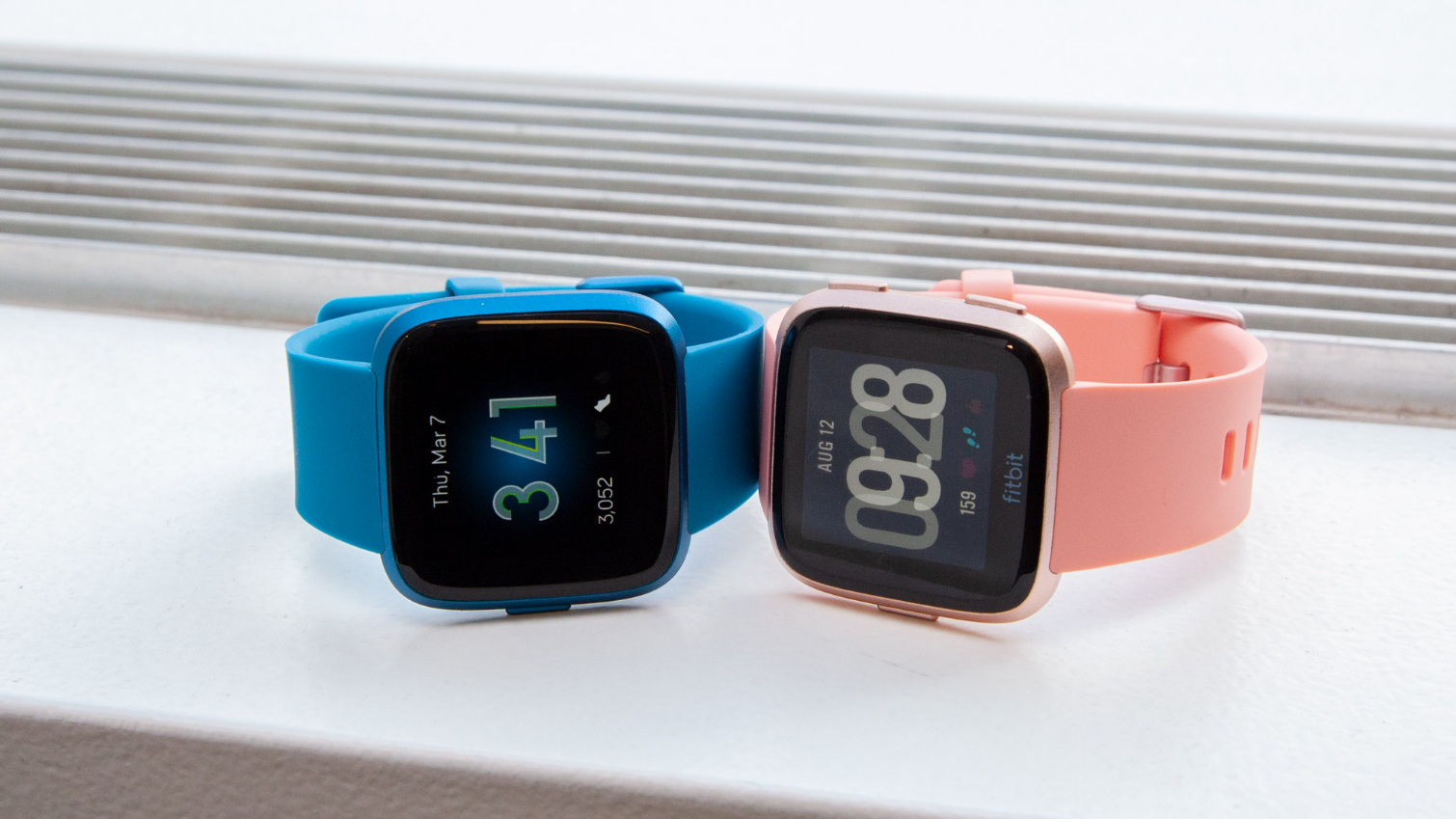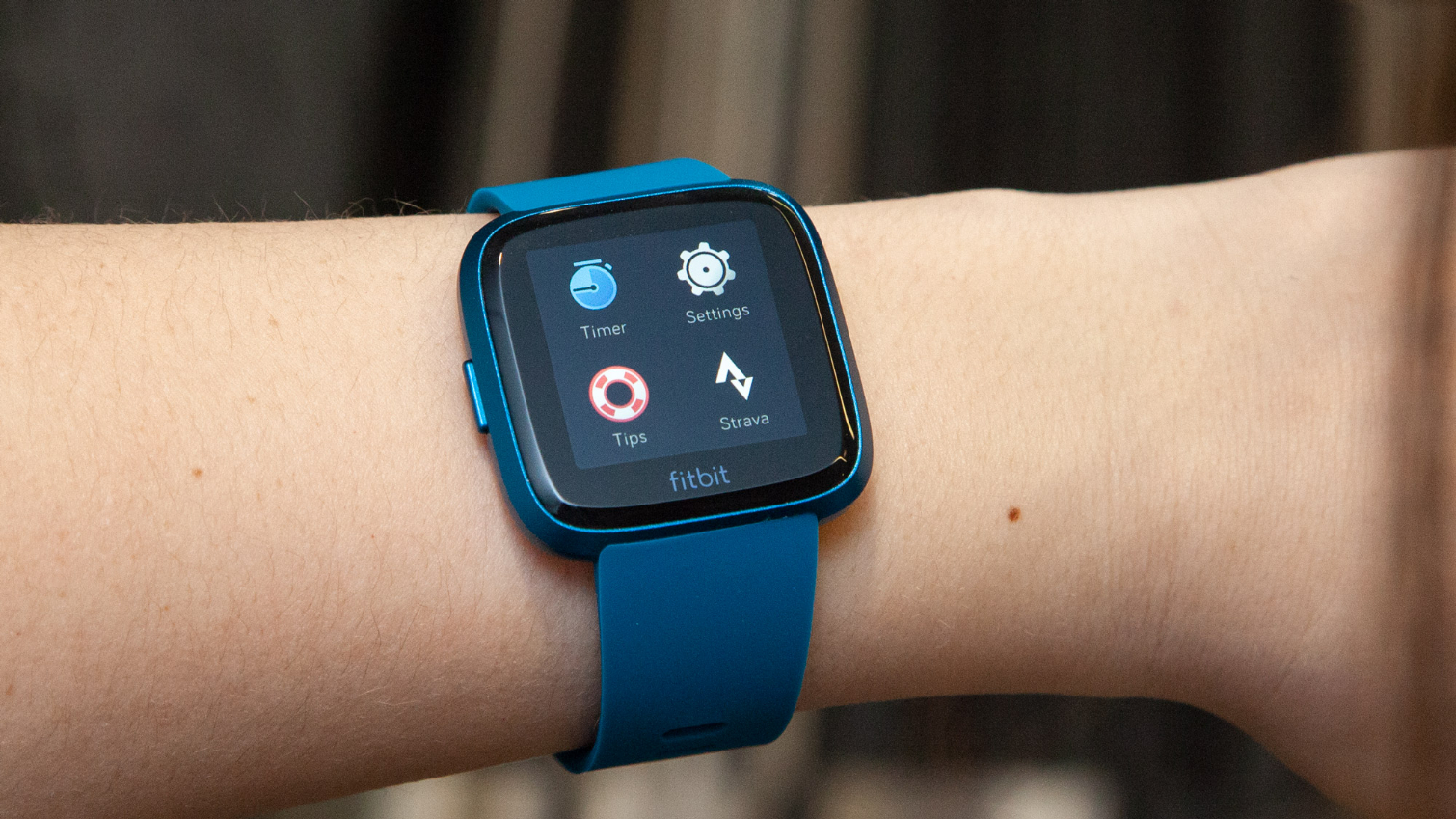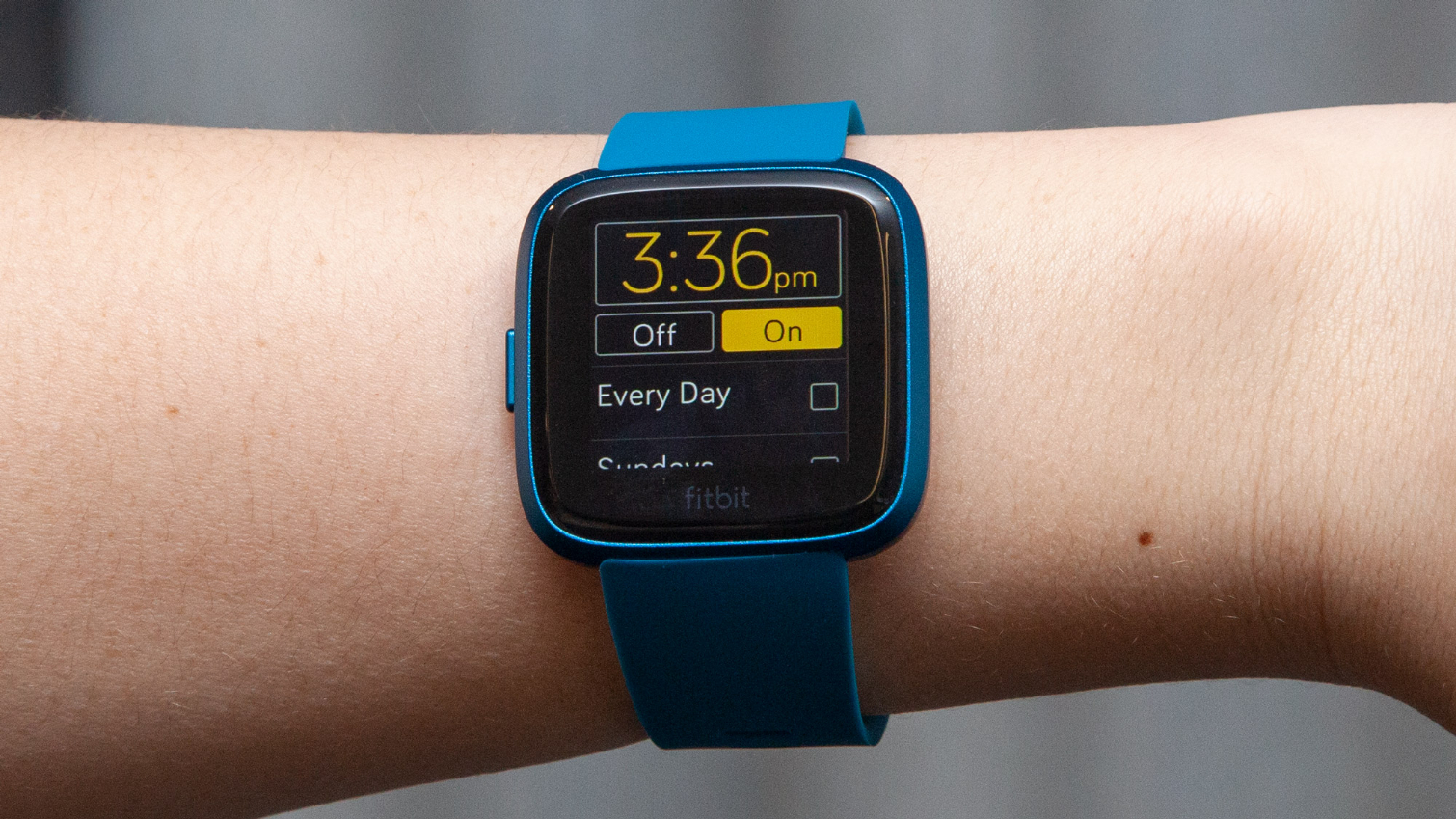Tom's Guide Verdict
While it's missing some of the snazziest features, the Versa Lite brings the core functionality of Fitbit's Versa at a more affordable price.
Pros
- +
Stellar battery life
- +
Accurate sleep and fitness tracking
- +
Fun color options
- +
Onboard health tracking
Cons
- -
Limited app store
- -
No onboard GPS
- -
No onboard music storage
Why you can trust Tom's Guide
For the past few years, stereotype has dictated that a smartwatch is a luxury purchase. Fitbit started to change that perception with the release of the Versa, one of the best sub-$200 smartwatches ever to hit shelves.
The company followed up its affordable flagship with the Versa Lite, a smartwatch with many of the same features — but a $40 lower price.
Still, $159 is a decent chunk of money, especially compared to what you pay for smartwatches like the $79 Amazfit Bip. But the Versa Lite provides the sleek style and intuitive, sophisticated software for which Fitbit is known. While the Versa Lite lacks some of the features you'll find on the Versa and higher-priced competitors like the Apple Watch and Galaxy Watch, budget users seeking a high-end product won't be disappointed with this watch.
Since this review originally posted, Fitbit launched the Fitbit Versa 2 ($199), which has longer battery life, Alexa built in, and a brighter display. However, the price of the Fitbit Versa Lite has since dropped to $99, making it more of a bargain. Be sure to read our Fitbit Versa 2 review or check out our Best Fitbit page before making a decision as to which is best for your needs.
If you own a Fitbit Inspire HR, Charge 3, Charge 4, Ionic, Versa, Versa 2, or Versa Lite, you can enroll in Fitbit's new heart study, and the company will notify you if your device detects an irregular heart rhythm that indicates AFib. Fitbit will also connect you with a doctor for a free consultation. The Fitbit Heart Study, open to U.S. residents 22 years or older, is being conducted to determine how accurate its devices are in detecting atrial fibrillation, as the first step to receiving FDA approval. Here's how to sign up for the Fitbit Heart Study.
Fitbit Versa Lite: Design
In terms of shape and size, the Versa and the Versa Lite are virtually identical. Both come with a 39mm screen. The Versa Lite is 22.9 grams, while the Versa is 23 grams. (You won't be able to feel the difference.)

Two factors set the Versa Lite apart from its predecessor. The first is the color selection. Fitbit says it's tailoring the Lite toward "youthful, fun-seeking" customers who are buying their first smartwatches. The Versa Lite's options reflect the focus on that demographic: You can get this watch in White, a light purple Lilac, a dark purple Mulberry or a bright Marina Blue. Compared to the Versa, which comes in Black, Gray or Rose Gold, the Lite offers a vibrant selection for a range of styles and seasons.
Get instant access to breaking news, the hottest reviews, great deals and helpful tips.
MORE: Fitbit Versa vs. Fitbit Versa Lite - which is best for you?
The second difference is the button setup: Both watches have a large On/Off and Back button on the left side, while the Versa has two additional buttons on the right side that control your music volume and can be programmed as shortcuts to certain apps. The extra buttons on the Versa are a nice bonus, but not a necessity; I could control the Lite just fine without them.

Compared to Fitbit's other offerings, the Versa Lite is a good-looking watch. The company's $149 Charge 3, for example, sports a similar band with a slimmer, 38mm screen, but it looks and feels more like a gym accessory than something I'd wear out and about. With its glossy metal case and rounded watch face, the Lite is more of a looker. I comfortably wore it to work, a fancy dinner, a theater outing and multiple workouts, and it never felt out of place.
You can technically swap out the Versa Lite's bands when you get tired, but it's no easy feat. I struggled for around 5 minutes to swap the blue band for a yellow one, which requires sliding a very tiny pin inward while struggling to fit another tiny pin into a very tiny hole. I imagine that this gets easier with practice, but how many times do you actually plan on changing your watchband?
Fitbit Versa: Performance
If there's one thing Fitbit devices do better than even their top-tier competitors, it's tracking exercise and sleep. And for those features, the Versa Lite is one of Fitbit's best yet. It caught all of the workouts I didn't actively log, including multiple Zumba aerobic workouts and elliptical sessions, and accurately tracked my heart rate throughout. Heavy sweat didn't seem to mess up the watch's sensors, a problem I've had with the Charge 2 and Charge 3.

As far as I could unscientifically tell, the Versa Lite was pretty spot-on in tracking my sleep cycles, as well as the times I woke up. One thing I appreciated: It didn't think I was sleeping while I was actually watching Netflix or reading in bed. This was another issue I experienced with the Charge 2, as well as Samsung's Galaxy Watch Active.
Beyond the tracking basics, however, the Versa Lite falls short of the competition in a couple ways. The most significant is that there's no onboard GPS, a key feature of devices like the Apple Watch Series 4 and Galaxy Watch Active. This means that if you're logging a walk or a run, you'll need to bring your phone along with you to track your distance.

Another reason you'll still need to bring your phone along: There's no onboard music storage. That gives a big advantage to the Versa, which does offer such storage. (But since the Versa also lacks onboard GPS, the music storage doesn't necessarily free you from your phone.)
However, you can still use the Versa Lite to control the music that your phone plays. Long-pressing the Back button pulls up a music control panel, including buttons to play/pause, skip and toggle the volume. In a slight glitch, the Lite occasionally failed to realize that a song was already playing, and so I'd need to press the Play button to get the Pause button to show up. Other than that, though, I had no issues with the controls.
MORE: How to Choose the Right Fitness Tracker for Your Needs
The benefit of these audio controls over onboard storage is that you're not limited to the few music services that Fitbit is partnered with. I got the Lite to work without a hitch with all kinds of audio sources, including Netflix, Hulu, HBO and Audible. The only one the watch didn't seem to connect to was the YouTube app, but it did work with YouTube in the Chrome browser.
The Versa Lite is also missing a few of the Versa's more-advanced tracking features. It can't track floors climbed or laps swum, nor does it offer guided workouts on its display, as the Versa does. You'll want to shell out for the Versa if you value these features, and particularly if you're a swimmer.
Fitbit Versa: Apps
Compared to what you'll find on the Apple Watch and Wear OS, Fitbit's app store leaves something to be desired. There's a limited selection of third-party apps, and while you'll recognize some of the names, you won't see anything from Facebook, Instagram, Twitter or anything else that plugs you in socially.

In fact, the only actionable notifications, besides fitness-related ones, that you'll get on the Versa Lite are Android messages. You can select a quick reply if you're an Android user, but you can't type a response out on the watch itself or dictate a response, as you can with the Galaxy lineup. You can't respond to iMessages, either, since Apple is (for the most part) a closed ecosystem.
In general, Fitbit doesn't allow its apps to access Wi-Fi, citing battery-life reasons. To pull data from the internet, the Versa Lite communicates (via Bluetooth) with a proxy app on your phone.
As a consequence, most of the apps you can use on the Versa Lite are fairly bare-bones. The New York Times app delivers a short list of the paper's most recent headlines, but tapping one of those entries brings up only the first few sentences of the article. The Yelp app brings up a list of restaurants around you with ratings, but you can't read reviews of those establishments or review them yourself. Apps like those for Starbucks and Flipboard require you to create an account and log in on your phone before you can use them on the watch.
MORE: Here Are the Most (and Least) Secure Fitness Trackers
I have trouble seeing the use case for apps like these, especially when I need to have my phone with me to exercise with the Versa Lite anyway. Why not just pull up the Times headlines there and get the full articles to boot?
You download apps through the app store in the Fitbit app, which you access by opening your user account, selecting your Versa Lite and tapping the Apps tab. For something that could be, for some users, an integral experience to using a smartwatch, this function's fairly hidden in the app. It would be more convenient to download apps if the store were more central or could be accessed on the watch itself.
Fitbit Versa: Features
Though the various swipes took a bit of getting used to, I ultimately found the Versa very easy to navigate.

The display was quite responsive, and I never had to tap anything twice. There was a bit more of a lag in the swipes than you'd see on a smartphone, but you probably won't notice it unless you're in a huge hurry.
Swiping left pulls up app options, as well as the functions for alarms and timers, logging exercise, the weather forecast, and settings. Swiping down reveals recent notifications, including calendar events and text messages.
Swipe up and you'll see the Today View, a list of health statistics and insights. You can select seven stats to display here, including such metrics as heart rate, exercise and step count.
MORE: 10 Most Surprising Uses for Fitness Trackers
You can also see the amount you slept the previous night on the Versa Lite, in addition to the amount of time you spent in each sleep stage and how those results compare to your weekly average. In addition, you can log your weight and water consumption directly on your watch and track your progress toward your goal weight. I always forget to log my weight when I don't have my phone around during a weigh-in, so I'm glad to see that you can now do so on your wrist.
Anyone who has a period can check their cycle in this view. You can also see the calories you've consumed broken down into proteins, fat and carbs (but menstrual cycles and food still need to be logged on your phone).
Fitbit Versa: Battery Life
Fitbit advertises the Versa Lite as having four days of battery life. I actually squeezed almost five and a half days out of one charge, tracking four nights of sleep, logging a few workouts, and occasionally checking notifications or messing around with apps. Your mileage may vary if you're using apps more consistently.
The Versa Lite's charging cradle is oversized and, frankly, not a looker. It's nice that it also fits the Versa, however, so you can easily share it if you've got multiple Fitbits in your house.
Fitbit Versa: Verdict
Ultimately, the Fitbit Versa is still the best smartwatch under $200, because it has a few more onboard features, including swim tracking, guided workouts and music storage. It also has extra buttons, which you may prefer if you'd really like a shortcut to your favorite app.
But for a user like me — a younger, budget-oriented person who wants to log several workouts a week, control music, track my sleep and occasionally pull up the weather forecast — the Versa Lite gets the job done at a lower price. Sure, there are watches cheaper than the Versa Lite out there but none with the third-party app store, sleek design, accurate fitness readings or health-tracking features that Fitbit provides — not to mention the spunky colors and five-day battery of the Versa Lite.
It would be great to see onboard GPS, music storage, better apps and swim tracking in a device for $159. Until then, the Versa Lite will do just fine.
Credit: Tom's Guide
Monica Chin is a writer at The Verge, covering computers. Previously, she was a staff writer for Tom's Guide, where she wrote about everything from artificial intelligence to social media and the internet of things to. She had a particular focus on smart home, reviewing multiple devices. In her downtime, you can usually find her at poetry slams, attempting to exercise, or yelling at people on Twitter.

